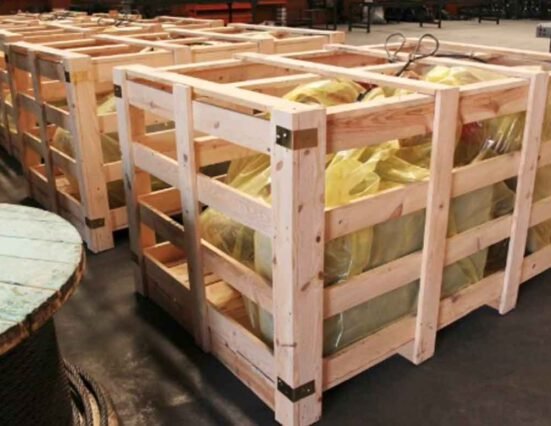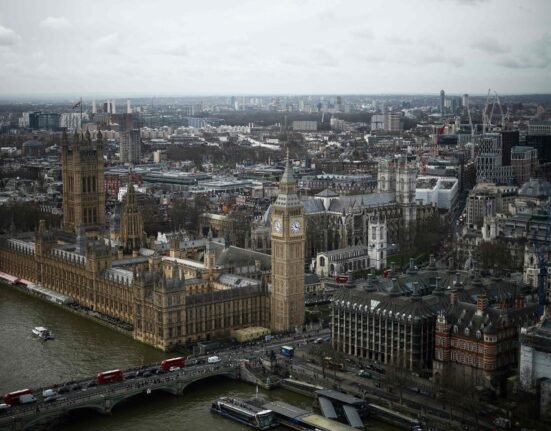UK departure from the EU has helped cause a huge drop in young overseas visitors to institutions like the Tate and National Galley. But rivals overseas are thriving
Leading British art galleries are struggling to regain hundreds of thousands of international visitors lost since the pandemic because of Brexit, it has emerged.
A dramatic fall in student visa applications, due to the end of free movement that existed when the UK was part of the European Union, has caused a drop in the number of young people from overseas visiting UK art galleries, analysis shows.
The decision by the last Conservative government to scrap VAT-free shopping for tourists and cost of living pressures for people living in regions outside London are also are also being blamed for the slump.
World-famous UK galleries, including the Tate institutions, the Royal Academy, and National Gallery have seen visitor numbers fall by between 20-50 per cent compared to 2019.
But rivals in Paris, Amsterdam and Florence have thrived over the same period.
The figures lay bare the challenges facing the arts sector in the wake of the UK’s departure from the European Union in 2020 and will put pressure on Keir Starmer’s Government to do more to support world-renowned institutions.
Tate, which has four galleries nationwide, has traditionally been popular with European visitors aged 16-24.
Tate Modern loses 250k young overseas visitors
But its own analysis reveals that a fall in student visa applications, the inability to use EU ID cards to travel to the UK and the end of VAT-free shopping have all caused a decrease in this demographic at its institutions.
Tate Modern has lost nearly half of its young overseas visitors since 2019-20. That year there were 609,000 European students and young travellers, but this number fell to 357,000 in 2023-24.

The analysis follows figures published last month by the Association of Leading Visitor Attractions (Alva), showing British art galleries have struggled to return to pre-pandemic visitor levels.
Attendance for UK museums has however rebounded over the same period, although the disparity may be due to them attracting different audiences – suggesting museums may be less reliant on overseas visitors than galleries are.
Visitors to all Tate galleries fell by 30 per cent since 2019 according to the Alva figures – although Tate said this was distorted by the current closure of its Liverpool base for refurbishment.
Once this is taken into account the figures for Tate’s three open galleries – Britain, Modern and St Ives – show a 20 per cent drop compared to the pre-Covid average.
While the Covid lockdowns forced the closure of visitor attractions in countries around the world, the Alva figures showed UK institutions have struggled to return to pre-pandemic levels compared with their international counterparts.
National Gallery and Royal Academy also hit
The National Gallery’s visitor numbers were down 47 per cent in 2024 compared to 2019, although last year’s blockbuster Van Gogh exhibition, which ran to this January, is expected to boost figures for the coming year.
The Royal Academy had a 50 per cent drop compared to 2019, while there were also falls at the Walker Art Gallery in Liverpool, Leeds Art Gallery and the Gallery of Modern Art in Glasgow.

By contrast, a survey for the Art Newspaper last year found that the Rijksmuseum in Amsterdam was back to its 2019 attendance figures, while the Musée d’Orsay in Paris had a 6 per cent rise on pre-pandemic levels and the Galleria degli Uffizi in Florence rose by 15 per cent.
Tate said the vast majority of its 20 per cent shortfall was due to a decrease in visits by international tourists, and that domestic visitor numbers and exhibition visitor numbers are both near to pre-Covid levels.
Tate recently set a new record for its most-visited exhibition ever, with 713,000 visitors to Yayoi Kusama’s Infinity Mirror Rooms at Tate Modern.
Liam Darbon, Director of Audiences for Tate told The i Paper: “The pandemic has clearly had a long-term impact on visitors and it’s one of many factors affecting museum audiences.
“Different organisations are seeing different patterns so it will take time to understand the bigger picture, but we have seen some overall changes in our demographics.
“Take young European tourists for example: over half of Tate’s international visitors are normally from Europe, and Tate is more popular with 16-24 year olds than most museums, so European students and young travellers have always been a particularly key audience for us.
End of tax-free shopping and use of EU ID cards
“Tate Modern alone welcomed 609,000 of them in 2019-20, but only 357,000 in 2023-24. A combination of economic and social changes – the rising cost of living, the end of VAT-free shopping, the fall in student visa applications from Europe, and the inability to use EU ID cards to travel to the UK – may explain why that demographic is taking longer to recover than others.”
Darbon said at the same time Tate was enjoying popularity among local young adults, including thousands of first-time visitors to Tate Lates and over 180,000 active members of Tate Collective, a scheme offering 16-25-year-olds £5 entry to exhibitions.
He added: “Over the coming years, exhibitions like Tracey Emin and Frida Kahlo will drive further growth, so we’re confident we have the right offer to draw those European visitors back to London in time.
“Another new pattern we’ve observed is in UK visitors from outside London. During the pandemic we inevitably saw our audiences become far more local as everyone avoided unnecessary travel.
“This gave Tate a chance to become more deeply embedded in the communities around our galleries and build new connections with local people.
UK visitors making few trips to galleries
“As time has passed, visitors from across the UK have resumed making longer trips to visit museums and galleries, but they are doing so less frequently than they once did.
“We think this reflects the impact of squeezed household budgets, perhaps combined with a growth in the popularity of remote working and nights in.
“For us, this means we’re now emphasising the importance of free admission to our ever-changing collection displays, so cost doesn’t feel like a barrier to entry, as well as highlighting how our membership offer makes it easier and more affordable to visit exhibitions regularly.”
Boris Johnson’s government scrapped VAT-free shopping for overseas visitors in January 2021, and Rachel Reeves has so far resisted calls from UK businesses and cultural institutions to reinstate it.
At the time it was scrapped, ministers claimed it would save the Treasury £500m in VAT receipts. But in 2023 research by the Centre for Economic and Business Research claimed the so-called “tourist tax” was costing the UK economy £10.7bn and deterring two million tourists a year.
John Dickie, chief executive of BusinessLDN, which lobbies for business in the capital, said: “Bringing back VAT-free shopping on goods for international visitors would more than pay for itself by encouraging spending in shops, hotels, bars, restaurants and art galleries across the UK rather than abroad.
“Scrapping the tourist tax would be a win-win for business and the economy across the country, including London.”
The government said it had no plans to reintroduce VAT-free shopping and said official figures showed that overall UK tourism numbers and spending had recovered at a similar rate following the pandemic to other European economies.
A government spokesperson said: “Since 2021, national museum and gallery visitor numbers have generally been rising as the sector has recovered from the pandemic with 42.5 million visitors to DCMS sponsored museums and galleries last year.
“Galleries across the country will receive a share of the recently announced £270 million Arts Everywhere Fund, which will support them to open up access for communities across the UK whilst continuing to attract tourists from around the world.”







